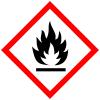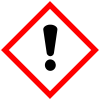The United States Navy, United States Coast Guard, and United States National Oceanic and Atmospheric Administration (NOAA) use a hull classification symbol to identify their ships by type and by individual ship within a type. The system is analogous to the pennant number system that the Royal Navy and other European and Commonwealth navies use.

The National Oceanic and Atmospheric Administration is an American scientific and regulatory agency within the United States Department of Commerce that forecasts weather, monitors oceanic and atmospheric conditions, charts the seas, conducts deep sea exploration, and manages fishing and protection of marine mammals and endangered species in the U.S. exclusive economic zone.

A ship prefix is a combination of letters, usually abbreviations, used in front of the name of a civilian or naval ship that has historically served numerous purposes, such as identifying the vessel's mode of propulsion, purpose, or ownership/nationality. In the modern environment, prefixes are cited inconsistently in civilian service, whereas in government service a vessel's prefix is seldom omitted due to government regulations dictating that a certain prefix be used. Today the common practice is to use a single prefix for all warships of a nation's navy, and other prefixes for auxiliaries and ships of allied services, such as coast guards. For example, the modern navy of Japan adopts the prefix "JS" – Japanese Ship. However, not all navies use prefixes. Among the blue-water navies, those of France, Brazil, China, Russia, Germany, and Spain do not use ship prefixes. NATO designations such as FS, FGS, and SPS can be used if needed.
The Fujita scale, or Fujita–Pearson scale, is a scale for rating tornado intensity, based primarily on the damage tornadoes inflict on human-built structures and vegetation. The official Fujita scale category is determined by meteorologists and engineers after a ground or aerial damage survey, or both; and depending on the circumstances, ground-swirl patterns, weather radar data, witness testimonies, media reports and damage imagery, as well as photogrammetry or videogrammetry if motion picture recording is available. The Fujita scale was replaced with the Enhanced Fujita scale (EF-Scale) in the United States in February 2007. In April 2013, Canada adopted the EF-Scale over the Fujita scale along with 31 "Specific Damage Indicators" used by Environment Canada (EC) in their ratings.
A UN number is a four-digit number that identifies hazardous materials, and articles in the framework of international trade and transport. Some hazardous substances have their own UN numbers, while sometimes groups of chemicals or products with similar properties receive a common UN number. A chemical in its solid state may receive a different UN number than the liquid phase if its hazardous properties differ significantly; substances with different levels of purity may also receive different UN numbers.
The IEEE Standard for Floating-Point Arithmetic is a technical standard for floating-point arithmetic established in 1985 by the Institute of Electrical and Electronics Engineers (IEEE). The standard addressed many problems found in the diverse floating-point implementations that made them difficult to use reliably and portably. Many hardware floating-point units use the IEEE 754 standard.

The Channel Islands National Marine Sanctuary is a sanctuary off the Pacific coast of Southern California. The National Marine Sanctuary program is under the administration of the National Oceanic and Atmospheric Administration.
The morphology of Irish is in some respects typical of an Indo-European language. Nouns are declined for number and case, and verbs for person and number. Nouns are classified by masculine or feminine gender. Other aspects of Irish morphology, while typical for an Insular Celtic language, are not typical for Indo-European, such as the presence of inflected prepositions and the initial consonant mutations. Irish syntax is also rather different from that of most Indo-European languages, due to its use of the verb–subject–object word order.

Ingeniero Aeronáutico Ambrosio L.V. Taravella International Airport, more commonly known as Pajas Blancas, is located 9 kilometres north-northwest of the center of Córdoba, the capital city of the Córdoba Province. The airport covers an area of 1,020 ha and is operated by Aeropuertos Argentina 2000 S.A.

Indigenous whaling is the hunting of whales by indigenous peoples recognised by either IWC or the hunting is considered as part of indigenous activity by the country. It is permitted under international regulation, but in some countries remains a contentious issue. It is usually considered part of the subsistence economy. In some places whaling has been superseded by whale watching instead. This article deals with communities that continue to hunt; details about communities that have ended the practice may be found at History of whaling.

Cordell Bank National Marine Sanctuary is a marine sanctuary located off the coast of California. It protects an area of 1,286 sq mi (3,331 km2) of marine wildlife. The administrative center of the sanctuary is on an offshore granite outcrop 4.5 sq mi (12 km2) by 9.5 sq mi (25 km2), located on the continental shelf off of California. The outcrop is, at its closest, 6 mi (10 km) from the sanctuary itself.

The spotted seal, also known as the larga seal or largha seal, is a member of the family Phocidae, and is considered a "true seal". It inhabits ice floes and waters of the north Pacific Ocean and adjacent seas. It is primarily found along the continental shelf of the Beaufort, Chukchi, Bering and Okhotsk Seas and south to the northern Yellow Sea and it migrates south as far as northern Huanghai and the western Sea of Japan. It is also found in Alaska from the southeastern Bristol Bay to Demarcation Point during the ice-free seasons of summer and autumn when spotted seals mate and have pups. Smaller numbers are found in the Beaufort Sea. It is sometimes mistaken for the harbor seal to which it is closely related and spotted seals and harbor seals often mingle together in areas where their habitats overlap.

The Kalina, also known as the Caribs or mainland Caribs and by several other names, are an indigenous people native to the northern coastal areas of South America. Today, the Kalina live largely in villages on the rivers and coasts of Venezuela, Guyana, Suriname, French Guiana, and Brazil. They speak a Cariban language known as Carib. They may be related to the Island Caribs of the Caribbean, though their languages are unrelated.

Central Bikol commonly called Bikol Naga, also known simply as Bikol, is an Austronesian language spoken by the Bicolanos, primarily in the Bicol Region of southern Luzon, Philippines. It is spoken in the northern and western part of Camarines Sur, second congressional district of Camarines Norte, eastern part of Albay, northeastern part of Sorsogon, San Pascual town in Masbate, and southwestern part of Catanduanes. Central Bikol speakers can be found in all provinces of Bicol and it is a majority language in Camarines Sur. The standard sprachraum form is based on the Canaman dialect.

This is a list of countries by estimated number of privately owned guns per 100 persons. The Small Arms Survey 2017 provides estimates of the total number of civilian-owned guns in a country. It then calculates the number per 100 persons. This number for a country does not indicate the percentage of the population that owns guns. This is because individuals can own more than one gun.

The Kol language, Aka-Kol, is an extinct Great Andamanese language, of the Central group. It was spoken in the southeast section of Middle Andaman.
The Regional Snowfall Index (RSI) is a scale used by NOAA to assess the societal impact of winter storms in the eastern two-thirds of the United States and classify them into one of six categories. The system was first implemented in 2014, and is a replacement for the Northeast Snowfall Impact Scale (NESIS) system which the National Climatic Data Center (NCDC) began using in 2005. The NCDC has retroactively assigned RSI values to almost 600 historical storms that have occurred since 1900.

Paksiw is a Filipino style of cooking, whose name means "to cook and simmer in vinegar". Common dishes bearing the term, however, can vary substantially depending on what is being cooked.














